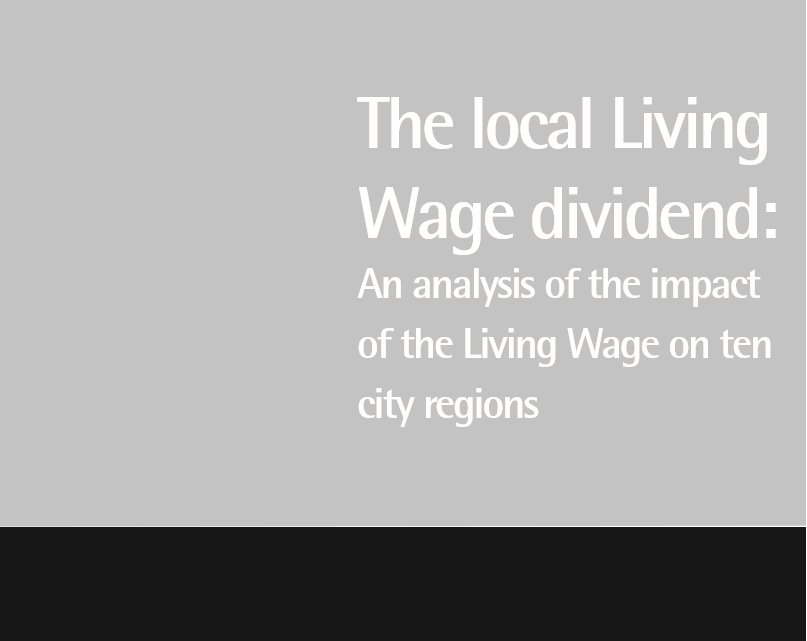Report: The local Living Wage dividend: An analysis of the impact of the Living Wage on ten city regions
Key findings
If a quarter of low-paid workers were lifted onto a Living Wage of £10.20 in London, and £8.75 in the rest of the UK, in ten city regions:
- More than half a million workers would secure an average annual pay rise of over £1,700.
- UK city regions would benefit from a £560 million boost; as well as a more inclusive local economy.
- The Treasury would benefit from £350 million in increased tax receipts and benefit savings.
- If half of this £350 million boost to the Treasury was returned by central government to city regions, the local economic benefit – a “Local Living Wage Dividend” – could increase to £1.1 billion – taking into account wider economic benefits such as increased local spending by low paid workers and government driving further economic activity.
The report calls on leading local public and private sector employers such as universities, hospitals, football clubs and city airports to provide leadership on paying the Living Wage. It calls on metro mayors and local authorities to work with these key ‘anchor institutions’ to drive Living Wage take up, and to integrate the Living Wage into their economic development strategies.







